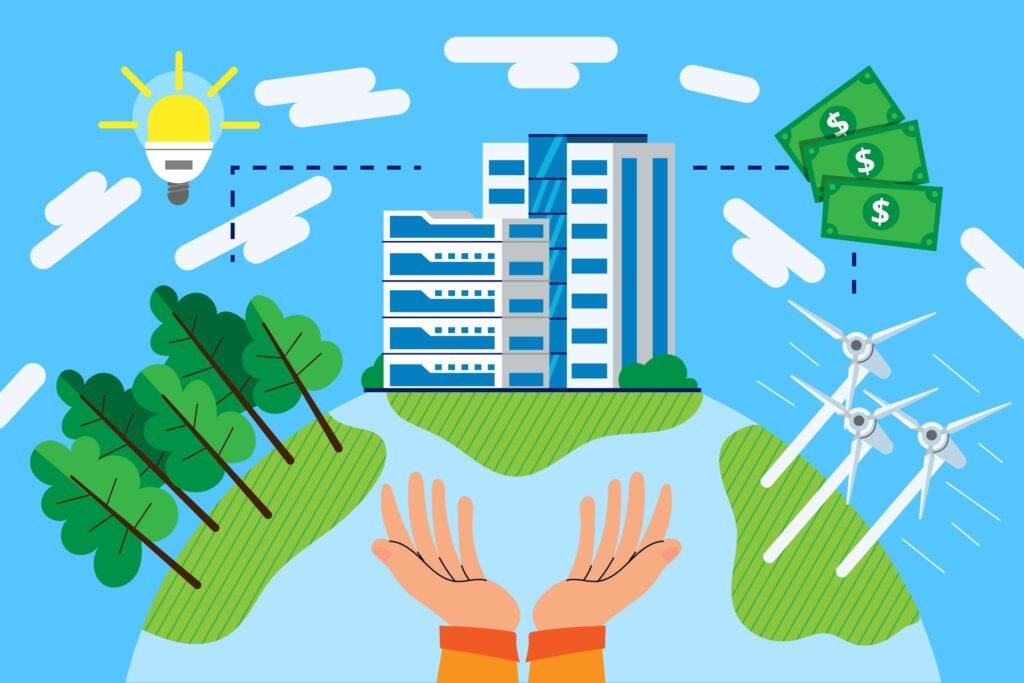Green finance is emerging as a vital tool in India’s journey toward sustainable development, especially in the context of affordable housing. As India experiences the rise of its fourth wave of industrialization, the demand for affordable housing has surged. Initiatives like Pradhan Mantri Awas Yojana (PMAY) have made significant strides in providing affordable homes, but the environmental cost of mass-scale construction cannot be ignored. Green finance addresses this challenge by promoting eco-friendly construction practices while fulfilling the nation’s housing needs.
This blog explores green finance, its importance, gaps in the affordable housing sector, and how bridging these gaps can ensure sustainable development.

What is Green Finance?
Green finance involves financial investments directed toward environmentally sustainable projects. These include loans, bonds, and equity investments designed to reduce carbon emissions and promote climate-conscious construction and energy-efficient housing.
Green finance doesn’t just address environmental concerns—it offers tangible benefits, such as:
- Reduced utility bills and energy consumption.
- Higher market value for green-certified projects.
- Tax incentives for developers and homebuyers.
- Employment generation.
For developers, green projects often mean a higher resale value and access to loans at reduced interest rates.
Why Affordable Housing Needs Green Finance

India’s Ambitious Goals for Net Zero
India’s Panchamrit Climate Action Plan sets a visionary target of achieving net zero carbon emissions by 2070. With construction accounting for 40% of total emissions, adopting green practices in this sector becomes essential. Affordable housing, an area of urgent demand, is an opportunity to incorporate green finance and reduce emissions without compromising affordability.
Pradhan Mantri Awas Yojana (PMAY): Transforming Housing
Under the PMAY initiative, affordable housing projects across India have enabled thousands of families to own homes. However, many housing projects prioritize cost-cutting over sustainability, leading to a significant environmental impact.
By integrating green finance, affordable housing can minimize energy use, increase efficiency, and lower costs in the long term, aligning economic development with environmental goals.
Key Benefits of Green Housing

Green finance in affordable housing provides dual benefits: economic relief for homebuyers and ecological preservation. Key advantages include:
- Lower Emissions: Reduced use of harmful construction practices.
- Incentives for Developers and Homebuyers: Financial perks, including lower interest rates on loans, better floor space index (FSI), and faster approvals.
- Improved Quality of Life: Thermal comfort, lower energy bills, and healthier environments for residents.
Challenges in Green Finance for Affordable Housing

Despite the potential of green finance, several barriers limit its adoption in India:
1. Awareness Gap
Green finance remains a novel concept for most of India. Many people perceive green construction as an expensive option. This misconception hinders the widespread adoption of sustainable practices. Awareness campaigns targeting rural and urban audiences can play a critical role in breaking these myths.
2. Limited Lenders
Affordable housing developers often struggle to secure funding from lenders for green initiatives. Programs like SUNREF (Sustainable Use of Natural Resources and Energy Finance) and agreements such as those between Asian Development Bank (ADB) and IIFL Home Finance Limited offer hope but remain insufficient to meet the growing demand.
3. Policy Deficiencies
India lacks strong mandates enforcing sustainability standards in housing. Regulatory measures and tax incentives can encourage developers and investors to prioritize green projects.
Addressing the Gaps: A Path Toward a Sustainable Future
To achieve its environmental and affordable housing goals, India must address these barriers with the following measures:
- Boosting Awareness: Launch educational campaigns to highlight the long-term savings and benefits of green housing.
- Incentivizing Lenders: Offer tax breaks, government subsidies, and reduced capital costs to encourage more lending institutions to finance green housing.
- Policy Enforcement: Implement policies mandating sustainability practices in construction, paired with incentives such as green bonds or carbon credits.

Conclusion
Green finance is not just an instrument for change—it’s a necessity for sustainable progress. By bridging the gaps in affordable housing and sustainability, India can create an inclusive, eco-friendly future, where affordable housing uplifts the economically disadvantaged and preserves the environment.
Planning to buy a home? Riverview Finserve offers green home loans to make sustainable housing a reality. Visit us today to learn more about our tailored, eco-friendly financing solutions!
